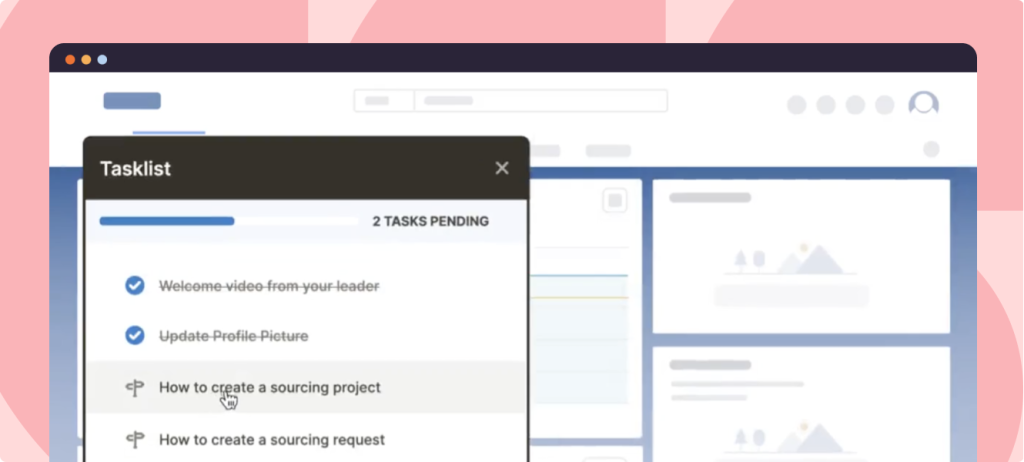Nonprofit organizations have traditionally lagged behind for-profit businesses in terms of digital transformation. Lack of funding and other complicating factors have made it difficult for nonprofits, especially smaller ones, to use new technologies that have become widely used in other sectors to transform business.
And the stakes keep rising. Modern donors expect seamless digital experiences, while volunteers want flexible engagement options. Traditional paper processes and manual workflows no longer meet these expectations. Organizations that delay digital transformation risk losing support and failing to achieve their vision.
Today, nonprofits are more frequently adopting digital solutions to improve operations, facilitate donor and volunteer interactions, and increase the impact of their organizations. Digitally mature nonprofits are 4x more likely than their peers to achieve their mission goals and 2x more likely to see improvement in operational efficiencies.
What Does Digital Transformation Mean for Nonprofits?
For nonprofits, digital transformation is about using digital solutions to maximize potential impact and service by transforming their operations and improving experiences. This can be done in various ways, including implementing new software to streamline operations, increasing reach via digital channels, and using data analytics to make decisions.
Digital transformation is a pathway for nonprofit organizations to succeed by increasing overall efficiency, facilitating donor and volunteer relationships, and improving communications to reach wider audiences.
Core Goals of Digital Transformation in Nonprofits
Why are nonprofits embracing digital transformation? Here are some of the most common goals.
1. Increasing donor transparency
Digital systems track funding allocation, program outcomes, and impact metrics. Donors can provide detailed reports on how their contributions count. Automated reporting tools also generate real-time updates.
2. Enhancing mission impact
Using analytics can make identifying underserved populations easier and measuring program effectiveness. Digital tools streamline service delivery, reducing administrative overhead and directing more resources to the right place.
3. Improving stakeholder collaboration
Technology powers many ways for people to work together. Cloud platforms connect staff, volunteers, donors, and beneficiaries. Project management tools coordinate teams across locations, track progress, and maintain accountability.
4. Strengthening data security
Information needs to stay in the right hands. Encrypted databases protect sensitive information and access controls prevent unauthorized data use while maintaining transparency for authorized stakeholders. Digital systems also create audit trails of all data access and modifications.
5. Accelerating decision making
Real-time analytics provide insights for strategic planning. Digital dashboards track key performance indicators across programs and departments. Capabilities like this can make information easily accessible and lead to better outcomes.
Digital Maturity of Nonprofits
Every nonprofit’s digital journey looks different. Some organizations still track donations in basic spreadsheets. Others use data analytics to transform their operations. Budget constraints and technical expertise gaps shape how quickly nonprofits can upgrade their systems, but the pressure to modernize continues to grow.
Benefits of Nonprofit Digital Transformation
Implementing new technologies in the workplace benefits nonprofits, its employees, and itsmvolunteers. Here are some benefits that come with becoming a digitally-geared organization:
1. Cloud-based services
Shifting to cloud-based services frees up in-house resources that require more in-person oversight. Cloud-based data storage also provides security benefits by making information accessible on the go and implementing strong security measures for access.
2. Streamlined processes and increased productivity
When nonprofits access the technology used by for-profit companies, every area of work benefits from increased efficiency.
3. Data security
Nonprofit organizations handle sensitive information that needs to be kept secure. Rather than keeping everything under physical lock and key, cloud-based data solutions add an element of security.
Between data encryption, multi-factor authentication, and prompts that ensure consent to data collection, digital transformation can give organizations a security boost.
4. Improves data access and management
Digital transformation makes it much easier to safely send, receive, and store sensitive documents and other forms of data.
Data can be generated and collected at every interaction with donors and volunteers. Keeping everything in cloud-based digital repositories enables nonprofit leaders to send and receive data, use analytics to understand it, and ensure it is kept safe at all times.
5. Increased impact of social objectives
Social objectives are the bottom line of nonprofit organizations. he efficiency and transparency that comes with digital transformation can make a world of difference. Shifting to digital project operations frees up manpower to increase the impact and success of every initiative.
6. Improves internal communication and collaboration
Rather than relying on phone calls or even email, cloud-based software can provide new avenues for communication to streamline processes. In-app communication tools help team members and volunteers reach each other more quickly, keep paper trails, and track project progress.
7. Supports critical capacity-building projects
Nonprofit leaders are constantly working toward increasing the ability of their organizations to serve communities and increase impact. Digital transformation makes it possible to expand these capacities.
Related Resources:
Components of a Nonprofit Transformation Strategy
Smart technology choices help nonprofits do more good. Let’s look at how digital tools create real impact when thoughtfully planned and implemented.
1. Aligning technology to outcomes
Smart nonprofits start with their mission. They pick digital tools that directly support program goals and measure impact. The right technology amplifies existing work instead of creating busy work.
2. Improving communication channels
Better tools mean better teamwork. Staff collaborate through project hubs while volunteers check mobile apps for updates. Donors can stay connected through automated updates about the programs they care about.
3. Enhancing productivity
Digital systems take over repetitive tasks like data entry and paperwork. This frees up staff time for what matters: direct program work and relationship building. Cloud platforms handle the routine work of tracking donations and scheduling volunteers.
4. Better donor and volunteer experience
Simple digital tools make giving and helping easier. Donors track their contributions and impact through online portals. Volunteers can search to find opportunities that match their skills and schedules.
5. Focused project prioritization
Change works best step by step. Start with core technology needs, then build from there. Each improvement sets up the next success. As your nonprofit learns what works best, you can apply those insights to new projects.
Digital Transformation Challenges Faced by Nonprofits
Here are some of the digital transformation challenges faced by nonprofits.
1. Funding limitations
Similar to digital transformation in education, a digital transformation challenge for nonprofits is that they generally have limited budgets. This can make it difficult to allocate funds for things like new technologies. Some organizations find success with grants, tech provider partnerships, or shared service models with other nonprofits.
Approaching digital transformation strategically can overcome these challenges. Take stock of existing operations and pinpoint the areas that would benefit the most from digital transformation. Begin by planning to implement changes in those areas and move forward as resources allow.
2. Inadequate technology infrastructure
Because technology builds on itself, organizations that function on an entire suite of outdated tools need to start by building up their technology infrastructure rather than investing in one single software.
In these cases, it makes sense to look for solutions that are more basic but have a far-reaching effect. This means implementing operations software that can be used across departments.
3. Lack of support from leadership
It can be challenging for leaders to see big-picture benefits through the budget issues.. For this reason, team members handling digital transformation must have a clear plan and be able to speak to projected return on investment. Ultimately, leaders should see how digital transformation will bring the organization closer to its mission.
4. Digital divide among nonprofits
Size and location create technology gaps. Urban nonprofits often access better digital tools than rural organizations. Larger nonprofits may have dedicated IT staff, while smaller ones rely on volunteers. This digital divide affects service delivery and operational efficiency.
5. Building training momentum for part-time and full-time volunteers
It’s important to include employee training software such as learning management system, digital adoption platforms, and knowledge management systems, as part of your digital transformation roadmap. Staff and volunteers need ongoing support and end-user training with new systems. High turnover rates make training programs essential. Digital training platforms help maintain consistent knowledge across teams.

→ Guide users through complex apps with contextual, role-based in-app guidance.
→ Support users at the moment of need with AI-powered Self Help and embedded workflow assistance.
→ Analyze user engagement to identify friction points and optimize business processes.
Examples of Digital Transformation in Nonprofits
Transformation doesn’t need to happen in one fell swoop – leaders can build out a comprehensive plan to shift the organization into the digital age. Here are 5 examples of areas where shifting to digital processes can greatly benefit nonprofit organizations.
1. Cloud-based tools for fundraising, donor management, and volunteer management
Nonprofits can use digital solutions and volunteer management apps to handle fundraising and volunteer efforts without the need for excessive paperwork and redundant conversations. The software can be implemented to automate emails, manage people, and schedule volunteer shifts from a central location.
For example, Meals on Wheels of Hamilton County had become very unhappy with their previous donor database. They struggled to track donors, grants, events, and volunteers. With Bloomerang, Meals on Wheels of Hamilton County can now report on donations by donors, clients, volunteers and other stakeholders.
2. Mobile giving
Donation management software allows donors to contribute directly from an organization’s website, no matter what type of device they’re using. Through this process, proper documentation and receipts are automatically generated to eliminate the need for any person-to-person interaction.
Modern donor management platforms also allow team members to manage donations and donor relationships from a centralized hub to keep track of related contracts, run reports, and send emails all in one place.
3. Virtual events
Fundraising events account for a substantial proportion of nonprofit fundraising efforts for many nonprofit organizations. They are also tricky because of the extensive amount of time and resources that go into holding in-person fundraisers. With digital transformation, nonprofit employees can hold events like talks, training lectures, demonstrations, and workshops in a virtual setting.
Holding virtual events rather than in-person ones significantly reduce costs, thereby increasing the return on investment for each event.
4. Virtual and on-demand training for volunteers
Virtual training is the way of the future. Learning and development software such as learning management systems and digital adoption software optimize training initiatives by letting employees tackle training in the ways that best suit their learning styles and ensure maximum learning retention.
5. Donor management and prospective research software
These smart systems remember every interaction with donors, spot giving patterns, and even predict who might become your next major supporter. They tap into screening databases to help you understand donors’ giving capacity and interests, making your fundraising efforts more targeted and personal.
For example, Plutus created a process using custom development to automatically wealth-scan donors as they came into the database. Following this, Plutus created an automation to assign donors to specific donor “buckets” based on each individual’s estimated giving capacity.
6. Nonprofit accounting and financial software
This keeps restricted and unrestricted funds separate, tracks grant spending, and ensures every dollar is accounted for. Come audit time, you’ll have clear records of every transaction, making reporting less stressful.
7. Nonprofit case management and human services software
Implementing this software plays a part in information safe while making it easy for authorized staff to access client histories and track program outcomes. Field workers can update records on their phones, even without internet access.
8. Big data, personalization, and predictive analytics
This spots trends in your programs’ effectiveness, predicts which donors might need extra attention, and helps customize communications for different supporters. It turns lots of information into actionable insights.
For example, ASCD uses Hubspot to send different messages to members and non-members in the same email. SMART modules mean saying goodbye forever to accidentally sending two, or even three emails to the same contact because suppressions and segments aren’t working properly. They also build lists based on a users’ interests by tracking certain websites and then segment their users by behaviors and interests.
9. Generative AI
AI can draft grant proposals, answer common donor questions through chatbots, and create personalized thank-you messages. It even analyzes program feedback to suggest improvements. This frees up your team to focus on what matters most, your mission.
How Can Nonprofits Embrace Digital Transformation?
Here’s how non profit organizations can embrace digital transformation for success.
1. Build a digital transformation roadmap
Start where you are. Look at what’s working and what isn’t in your current operations. Talk to your team about their daily frustrations. Which tasks eat up their time?
Turn these insights into a practical plan. Pick some quick wins that show immediate value, like moving paper forms online. Save bigger projects, like a new donor database, for later phases. Choose goals that matter to your mission. These could be:
- Hours given back to program work
- More meaningful donor connections
- Broader community reach
- Happier staff and volunteers
2. Take a slow, staged approach to digital transformation
Any amount of change can be overwhelming, but tackling digital transformation in one fell swoop may be unwise – especially if your organization is not prepared. For many organizations, a better approach would be to take inventory and determine which needs are greatest and start with those.
From there, a plan can be put in place to implement digital solutions slowly as part of a comprehensive plan. If you can find the budget, hiring a digital transformation consultant can help ensure your business takes a slow, successful approach to digitization.
3. Deploy chatbots to automate core fundraising activities
For day-to-day fundraising activities, messenger chatbots can be embedded directly into an organization’s website to facilitate donations without devoting a ton of extra manpower. These bots can guide people to make donations and provide the information they need to make decisions, only requiring the attention of an employee in special cases.
4. Gather and use data for better insights
Digital transformation can connect decision-makers to the information they need to guide the direction of the organizations. Data related to donor and volunteer pools can be used to guide fundraising and recruitment campaigns, large-scale funding data can guide grant-writing efforts, and other data about the nonprofit landscape can help organization leaders seek out niches where their service will have the most substantial impact.
5. Implement digital adoption platform to manage training
Training employees and volunteers is a costly endeavor in terms of time and funds. Incorporating digital adoption platform such as Whatfix help facilitate automated and personalized employee training via interactive walkthroughs, videos, and self-help menus.
6. Embrace change management
Implementing changes within an organization can bring on many challenges. For effective change management, it is important for leaders to break the initiative into phases to avoid overwhelming employees with too many changes at once. Also, since not all employees learn the same way, consider using various training methods to cater to all your employee needs.
7. Create help and support content for end-users
Nonprofits can improve the experience of end users, including potential donors and volunteers, by implementing digital software such as website chatbots and information repositories.
8. Monitor technology adoption and user engagement
An important aspect of digital transformation is monitoring its reception and guiding its success. This can be done through the analytic tools built in the implemented technology. Nonprofit organizations can analyze user data to zero in on pain points and provide extra guidance where necessary – adoption software can deliver this guidance automatically.
Nonprofit Software Clicks Better With Whatfix
Small nonprofits and large foundations face the same challenge: getting staff and volunteers up to speed quickly. Whatfix adds in-app guidance, process automation, and contextual training to your existing nonprofit tools. Your team gets:
- A searchable help center inside your software that makes policies, procedures, and resources accessible. Perfect for part-time staff and volunteers who need quick answers.
- Step-by-step workflows that guide users through complex processes like donor data entry, grant applications, and financial reporting.
- Analytics that show which features cause confusion and where users need extra support, so you can continuously improve your training.
- Built-in feedback tools that help your systems evolve as your nonprofit grows.
Whatfix integrates with common nonprofit software platforms to provide support where your team already works. By making your systems more accessible, you reduce training time, prevent data entry errors, and keep your focus on your mission.
Want to see how Whatfix can help your nonprofit serve more people? Schedule a demo.






